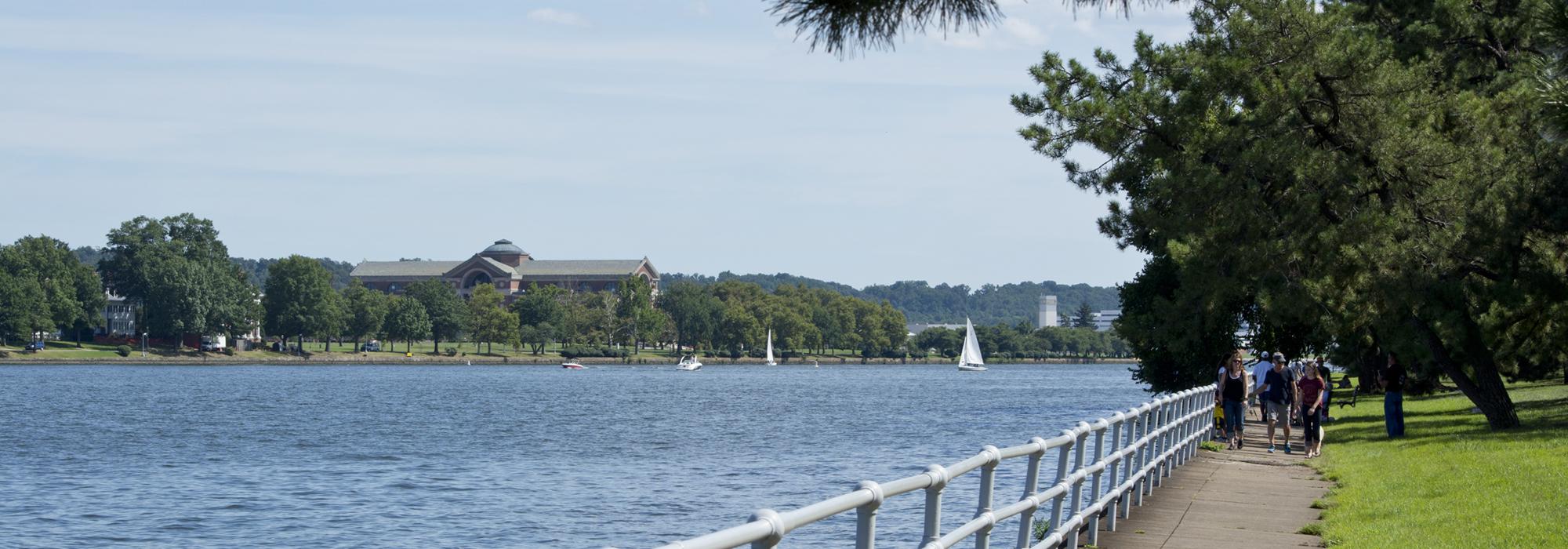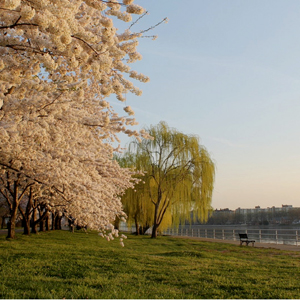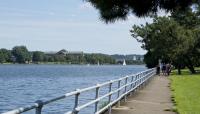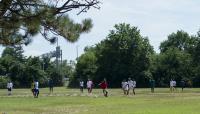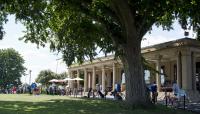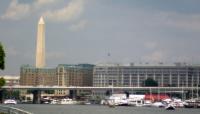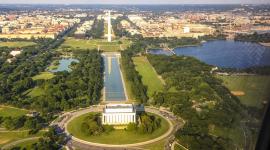Landscape Information
Originally part of the shallow underwater Potomac River Flats reclaimed by the U.S. Army Corps of Engineers in the late nineteenth century, this island was declared a public park in 1897 by an Act of Congress. The island was placed in the control of the Office of Public Park and Grounds, who established the land as a recreational space in accordance with the Senate Park Commission’s McMillian Plan of 1902. Park commissioners hired golf course architect Walter Travis to design a links-style, eighteen-hole course between 1917 and 1923. An adjacent nine-hole course, laid out by golf course architect William Flynn, was opened in 1925, with a nine-hole extension added in 1931. Other recreational features include a swimming pool designed by the Works Progress Administration in 1936 and a miniature golf course built in 1931. The island is home to the National Park Service’s National Capital Region headquarters, constructed in 1963 by architect William Haussmann as part of the Mission 66 initiative.
The 327-acre infill park divides the Washington Channel and the Potomac River. The one-way Ohio Drive, constructed by the U.S. Army Corps of Engineers between 1912 and 1916, loops around the park’s perimeter. Japanese cherry and other flowering trees, planted in 1966 as part of First Lady Claudia “Lady Bird” Johnson’s Beautification Project, frame both sides of the road, separating it from scenic walks that top the island’s sea walls. Dominating the landscape from Buckeye Drive to Hains Point is the 210-acre East Potomac Golf Course, comprising both Travis’ and Flynn’s designs. To the southwest, Hains Point begins with an open recreational field and playground framed by pines and more cherry trees and culminates in an overlook with panoramic views of the confluence of the Anacostia and Potomac Rivers and the skylines of both Washington, D.C., and Arlington, Virginia. This park is listed on the National Register of Historic Places as the East and West Potomac Parks Historic District, revised in 1999.



